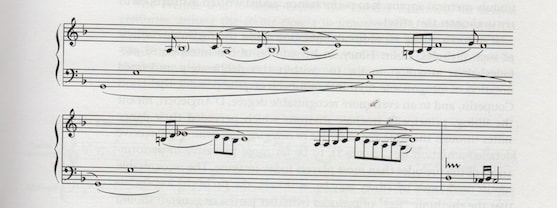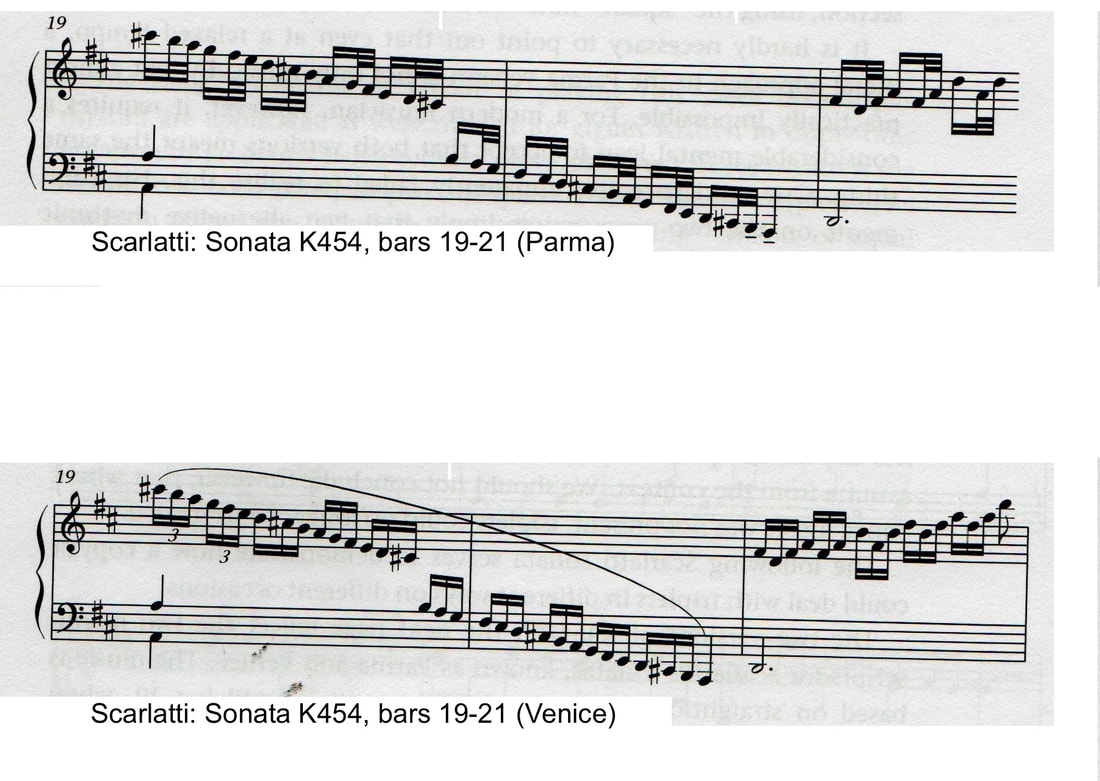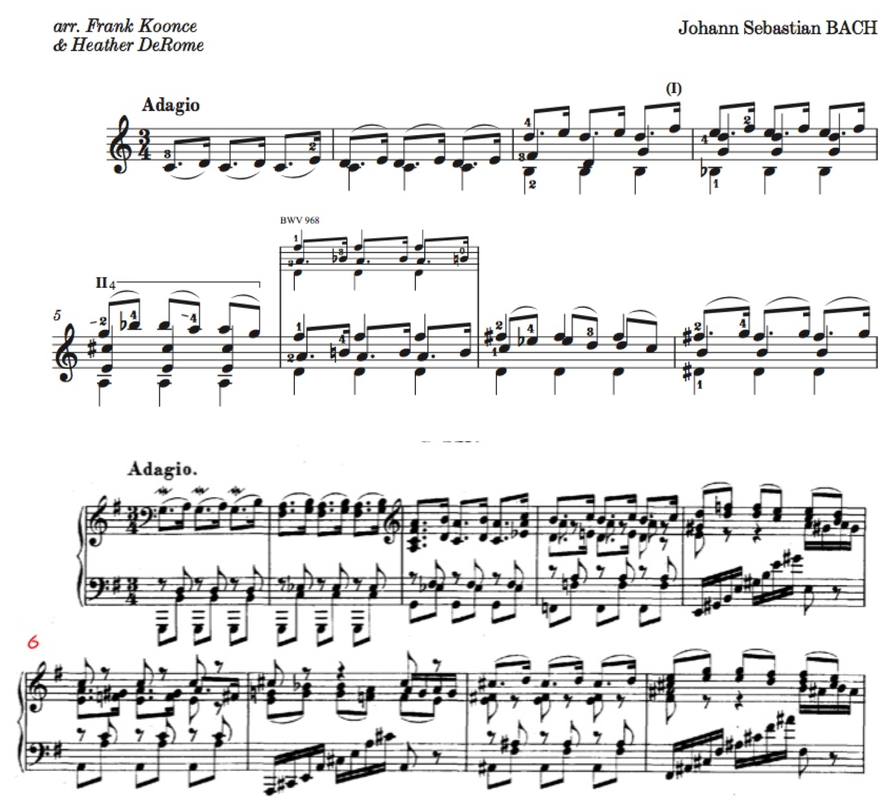Interpreting the Adagio Movements
In 1737, music critic Adolf Scheibe wrote that by notating the embellishments in his adagio movements, J.S. Bach “not only deprives his listeners of beauty and harmony but also makes the melodic line utterly unclear.”1 Thankfully, Bach’s supporters came to his defense; however, he was not the only composer to sustain such criticism. An edition of Corelli’s work that attempted to notate his improvised embellishments was harshly criticized for similar reasons: “… It is the hardest task that can be to Pen the Manner of artificial [i.e., with art] gracing an upper part. It hath been attempted and in print, but with Woeful Effect. … the spirit of that art is incommunicable by wrighting, therefore it is almost inexcusable to attempt it …”2 Also: “Embellishments, for the most part, are not marked at all on paper… because in fact they can not be marked for lack of signs for that purpose”3.
“Lack of signs for that purpose” is, I think, most enlightening. These fine details were meant to be freely improvised; musical gestures came in and out of fashion, just as they do today, and music notation did not have the symbols to convey all those improvised nuances. We still “lack the signs for that purpose” of conveying a performance that is––in essence–– played with a contemporary “feel.” For example, how could this performance possibly be notated in such a way that it might be accurately recreated four-hundred years from now? Even with the help of the recording, and only a few decades after it was made, it is almost impossible for us to imitate the style exactly.
Think of it: Throughout history, all styles have only managed to stay in fashion for a decade or two. Elephant-pants looked great in the 70’s and silly in the 90’s. Similarly, in 1776, the “Academy of Antient Music” defined its repertoire as “no younger than about twenty years.”4 In the Baroque, composers were not writing for posterity, but for contemporaneous colleagues and students. There was much that was implied and expected to be universally understood, and these are the conventions that often elude players today.
In retrospect, we are fortunate that some composers did write out their divisions and ornaments because they have given us examples as to how we might interpret other works of the period that are not so meticulously notated. The prelude/adagio movements, especially, show huge variances insofar as how much or how little detail a composer would include in the notation.
For example, in D’Anglebert’s Prelude in G-minor, shown here, both versions show a very sparse score; and while the revised version is more precisely notated, there is still much latitude, as to how one might interpret the score.5 Compare these to the opening measures of BWV 968, also shown in this article.

Another important consideration is that notational conventions––particularly as regards rhythmic notation––at that time were limited compared to what we are accustomed to now: In instances where there are many divisions to the beat, the custom was to divide by halves so that the beats always looked (on the page) to be multiples of two; i.e., 8ths, 16ths 32nds, and so on. This did not preclude odd-numbered groupings; it simply meant that––on the score––subdividing was done by halves, and that when extra notes were needed, smaller subdivisions were added.
Compare, for example, measures 19–21 in this Scarlatti Sonata, from two different editions.6

Even though the Parma score has 16ths and 32nds, it is quite likely that both in Parma and in Venice, the triplets were played. See also the performance notes on page 9 of our edition, for options as to how one might interpret the small subdivisions in Bach’s adagio movements.
Coming back to Scheibe’s comment, although disparaging and short-sighted, it does call our attention to important issues regarding our interpretation of Bach’s music. First, if Bach’s ornaments in these adagios did “make the melodic line utterly unclear,” then what would be that melodic line? Compare for instance, the first two lines of the adagio from BWV 1005 in C Major to its keyboard transcription, BWV 968.

Is it possible that Scheibe would have preferred the G- and A-Minor adagios to be written simply, as in the C-Major adagio? Likewise, is it also possible that in Bach’s time, violinists would have elaborated on the C-Major adagio, to make it more like those in BWV 1001 and 1003?
A great exercise is to write out the basic melodic line that underpins these adagio movements, taking out all the ornaments and small divisions and playing it in its undecorated form. Then, once firmly established, add in Bach’s divisions as though improvising them over the basic melodic and rhythmic framework.
Another issue that Scheibe’s comment illuminates, is the need for performers to reconcile the respect they have for Bach’s notation and for his wishes as to how an adagio should be played––with the necessity for rhythmic flexibility in the prelude-type (improvisatory) movements. I ask my students to learn this piece with the metronome between 50 and 60 BPM’s, clicking eight times per measure, and then to find a slow metronome online and be able to play with a metronome clicking only four times per measure. Once they can do that, I ask them to play it more freely. There are two reasons that this is helpful. The first, is obvious: It is easier to learn the subdivisions. The second is that it ensures that when we play feeling it “in four” and with a more flexible rhythmic approach, that we still feel the dotted rhythms. I believe that the rhythm needs to be malleable, but that when no new note is sounded on a beat (strong or weak), that beat is still felt. This will become instilled when a player practises with the metronome clicking eight times per measure. The next step, learning to play with a slow metronome, may be difficult at first, but that practice will develop invaluable skills.
[1]Johann Adolf Scheibe, Hamburg, 1737, cited in Robert Donington, Baroque Music, Style and Performance: A handbook (New York, London: W.W. Norton & Company, 1982), 95. Scheibe championed a distinctly Germanic style of music, one whose impulses were toward naturalness and simplicity. Although he considered Bach one of the finest organists along with G.F. Handel, he disagreed with Bach’s compositional practises, which took much from Italian models. He thus criticized Bach rather harshly; however, this did Bach’s reputation some good, because Scheibe’s prickly tone everywhere stimulated sympathy for Bach.
[2]Roger North, early 1700s, ibid, 94.
[3]Bénigne de Bacilly, Paris, 1668, ibid 94.
[4]Bruce Hayes, The End of Early Music: a Period Performer’s History of Music for the Twenty-First Century (Oxford, New York: Oxford University Press, 2007), 123.
[5]As shown in Colin Booth, Did Bach Really Mean That?: Deceptive notation in Baroque keyboard music (Wells, Somerset: Soundboard, UK, 2010), 4-5. Gratefully used with permission. See https://www.colinbooth.co.uk.
[6]Ibid, 98.
copyright 2019, Koonce, DeRome. All rights reserved.
By: Heather DeRome, with thanks to Frank Koonce.

In 1737, music critic Adolf Scheibe wrote that by notating the embellishments in his adagio movements, J.S. Bach “not only deprives his listeners of beauty and harmony but also makes the melodic line utterly unclear.”1 Thankfully, Bach’s supporters came to his defense; however, he was not the only composer to sustain such criticism. An edition of Corelli’s work that attempted to notate his improvised embellishments was harshly criticized for similar reasons: “… It is the hardest task that can be to Pen the Manner of artificial [i.e., with art] gracing an upper part. It hath been attempted and in print, but with Woeful Effect. … the spirit of that art is incommunicable by wrighting, therefore it is almost inexcusable to attempt it …”2 Also: “Embellishments, for the most part, are not marked at all on paper… because in fact they can not be marked for lack of signs for that purpose”3.
“Lack of signs for that purpose” is, I think, most enlightening. These fine details were meant to be freely improvised; musical gestures came in and out of fashion, just as they do today, and music notation did not have the symbols to convey all those improvised nuances. We still “lack the signs for that purpose” of conveying a performance that is––in essence–– played with a contemporary “feel.” For example, how could this performance possibly be notated in such a way that it might be accurately recreated four-hundred years from now? Even with the help of the recording, and only a few decades after it was made, it is almost impossible for us to imitate the style exactly.
Think of it: Throughout history, all styles have only managed to stay in fashion for a decade or two. Elephant-pants looked great in the 70’s and silly in the 90’s. Similarly, in 1776, the “Academy of Antient Music” defined its repertoire as “no younger than about twenty years.”4 In the Baroque, composers were not writing for posterity, but for contemporaneous colleagues and students. There was much that was implied and expected to be universally understood, and these are the conventions that often elude players today.
In retrospect, we are fortunate that some composers did write out their divisions and ornaments because they have given us examples as to how we might interpret other works of the period that are not so meticulously notated. The prelude/adagio movements, especially, show huge variances insofar as how much or how little detail a composer would include in the notation.
For example, in D’Anglebert’s Prelude in G-minor, shown here, both versions show a very sparse score; and while the revised version is more precisely notated, there is still much latitude, as to how one might interpret the score.5 Compare these to the opening measures of BWV 968, also shown in this article.

Another important consideration is that notational conventions––particularly as regards rhythmic notation––at that time were limited compared to what we are accustomed to now: In instances where there are many divisions to the beat, the custom was to divide by halves so that the beats always looked (on the page) to be multiples of two; i.e., 8ths, 16ths 32nds, and so on. This did not preclude odd-numbered groupings; it simply meant that––on the score––subdividing was done by halves, and that when extra notes were needed, smaller subdivisions were added.
Compare, for example, measures 19–21 in this Scarlatti Sonata, from two different editions.6

Even though the Parma score has 16ths and 32nds, it is quite likely that both in Parma and in Venice, the triplets were played. See also the performance notes on page 9 of our edition, for options as to how one might interpret the small subdivisions in Bach’s adagio movements.
Coming back to Scheibe’s comment, although disparaging and short-sighted, it does call our attention to important issues regarding our interpretation of Bach’s music. First, if Bach’s ornaments in these adagios did “make the melodic line utterly unclear,” then what would be that melodic line? Compare for instance, the first two lines of the adagio from BWV 1005 in C Major to its keyboard transcription, BWV 968.

Is it possible that Scheibe would have preferred the G- and A-Minor adagios to be written simply, as in the C-Major adagio? Likewise, is it also possible that in Bach’s time, violinists would have elaborated on the C-Major adagio, to make it more like those in BWV 1001 and 1003?
A great exercise is to write out the basic melodic line that underpins these adagio movements, taking out all the ornaments and small divisions and playing it in its undecorated form. Then, once firmly established, add in Bach’s divisions as though improvising them over the basic melodic and rhythmic framework.
Another issue that Scheibe’s comment illuminates, is the need for performers to reconcile the respect they have for Bach’s notation and for his wishes as to how an adagio should be played––with the necessity for rhythmic flexibility in the prelude-type (improvisatory) movements. I ask my students to learn this piece with the metronome between 50 and 60 BPM’s, clicking eight times per measure, and then to find a slow metronome online and be able to play with a metronome clicking only four times per measure. Once they can do that, I ask them to play it more freely. There are two reasons that this is helpful. The first, is obvious: It is easier to learn the subdivisions. The second is that it ensures that when we play feeling it “in four” and with a more flexible rhythmic approach, that we still feel the dotted rhythms. I believe that the rhythm needs to be malleable, but that when no new note is sounded on a beat (strong or weak), that beat is still felt. This will become instilled when a player practises with the metronome clicking eight times per measure. The next step, learning to play with a slow metronome, may be difficult at first, but that practice will develop invaluable skills.
[1]Johann Adolf Scheibe, Hamburg, 1737, cited in Robert Donington, Baroque Music, Style and Performance: A handbook (New York, London: W.W. Norton & Company, 1982), 95. Scheibe championed a distinctly Germanic style of music, one whose impulses were toward naturalness and simplicity. Although he considered Bach one of the finest organists along with G.F. Handel, he disagreed with Bach’s compositional practises, which took much from Italian models. He thus criticized Bach rather harshly; however, this did Bach’s reputation some good, because Scheibe’s prickly tone everywhere stimulated sympathy for Bach.
[2]Roger North, early 1700s, ibid, 94.
[3]Bénigne de Bacilly, Paris, 1668, ibid 94.
[4]Bruce Hayes, The End of Early Music: a Period Performer’s History of Music for the Twenty-First Century (Oxford, New York: Oxford University Press, 2007), 123.
[5]As shown in Colin Booth, Did Bach Really Mean That?: Deceptive notation in Baroque keyboard music (Wells, Somerset: Soundboard, UK, 2010), 4-5. Gratefully used with permission. See https://www.colinbooth.co.uk.
[6]Ibid, 98.
copyright 2019, Koonce, DeRome. All rights reserved.

 Videos
Videos Articles
Articles Interpreting the Adagio Movements
Interpreting the Adagio Movements